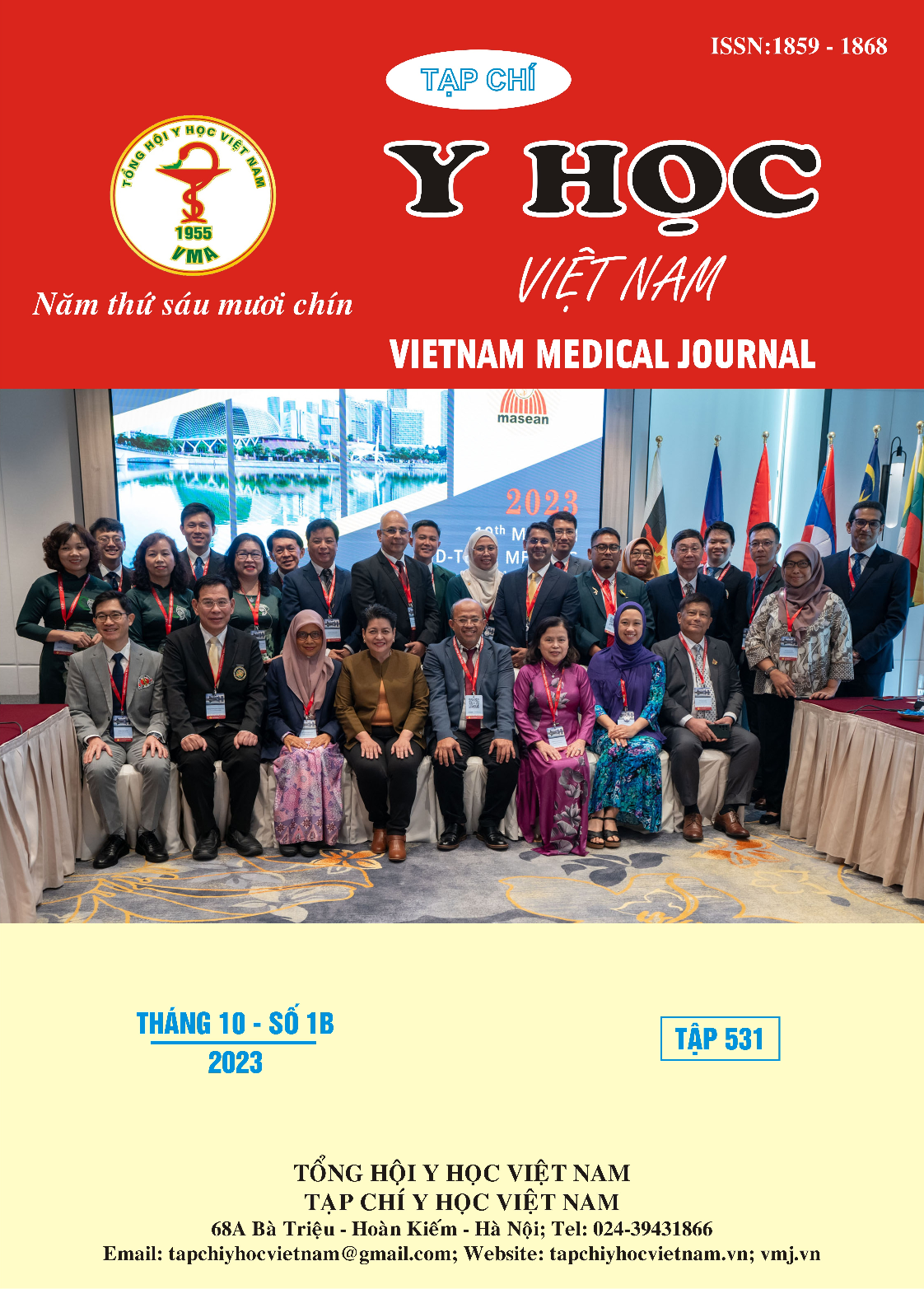PHÔI KHẢM: MỘT SỐ YẾU TỐ ẢNH HƯỞNG ĐẾN KHẢM Ở PHÔI NANG
Nội dung chính của bài viết
Tóm tắt
Mục tiêu: Xác định tỷ lệ khảm theo các phân loại ở phôi nang và phân tích một số yếu tố liên quan đến tình trạng khảm ở phôi trên 655 phôi nang của những cặp vợ chồng thực hiện thụ tinh trong ống nghiệm (IVF) làm xét nghiệm di truyền tiền làm tổ (PGT-A) bằng phương pháp giải trình tự gen thế hệ mới (NGS). Phương pháp: nghiên cứu mô tả cắt ngang hồi cứu, tại Trung tâm Hỗ trợ sinh sản Bệnh viện Đa khoa Tâm Anh Hà Nội từ 3/2021-2/2022. Kết quả: Tỷ lệ phôi khảm là 27,48%; khảm 1 cặp nhiễm sắc thể (NST), 2 cặp NST và từ 3 cặp NST trở lên với tỷ lệ lần lượt là 11,76%; 7,32% và 8,40%. Phần lớn là khảm lệch bội NST chiếm tỷ lệ 20,46%; khảm cấu trúc NST là 3,81% và khảm hỗ hợp là 3,21%. Tỷ lệ phôi khảm mức độ thấp là 11,30% và khảm mức độ cao là 16,18%. Số lượng khảm cao ở tế bào lá nuôi (TE) loại B cao gấp 3,06 lần so với số lượng khảm cao ở TE loại A có ý nghĩa thống kê với p<0,05. Không thấy mối liên quan giữa các đặc điểm lâm sàng như tuổi mẹ, tuổi bố, chỉ số khối cơ thể, số ngày kích thích buồng trứng, tổng liều gonadotropin và các đặc điểm hình thái khác của phôi với tỷ lệ khảm, cũng như nguy cơ về mức độ khảm của phôi. Kết luận: Đặc điểm TE có thể có liên quan đến mức độ khảm ở phôi nang trước làm tổ.
Chi tiết bài viết
Từ khóa
phôi nang, phôi khảm, tỷ lệ khảm, PGT-A, NGS.
Tài liệu tham khảo
2. Munné S, Kaplan B, Frattarelli JL, et al. Preimplantation genetic testing for aneuploidy versus morphology as selection criteria for single frozen-thawed embryo transfer in good-prognosis patients: a multicenter randomized clinical trial. Fertil Steril. 2019;112(6):1071-1079.e7. doi:10.1016/ J.FERTNSTERT.2019.07.1346
3. Wu L, Jin L, Chen W, et al. The true incidence of chromosomal mosaicism after preimplantation genetic testing is much lower than that indicated by trophectoderm biopsy. Human Reproduction. 2021; 36(6):1691-1701. doi:10.1093/HUMREP/DEAB064
4. Sachdev NM, Ribustello L, Liu E, McCulloh DH, Grifo J, Munne S. The rate of mosaic embryos from donor egg as detected by next generation sequencing (NGS) varies by IVF laboratory. Fertil Steril. 2016;106(3):e156-e157. doi:10.1016/j.fertnstert.2016.07.463
5. Lin PY, Lee CI, Cheng EH, et al. Clinical Outcomes of Single Mosaic Embryo Transfer: High-Level or Low-Level Mosaic Embryo, Does It Matter? Journal of Clinical Medicine 2020, Vol 9, Page 1695. 2020;9(6):1695. doi:10.3390/ JCM9061695
6. Lee CI, Cheng EH, Lee MS, et al. Healthy live births from transfer of low-mosaicism embryos after preimplantation genetic testing for aneuploidy. J Assist Reprod Genet. 2020;37(9): 2305-2313. doi:10.1007/S10815-020-01876-6
7. Spinella F, Fiorentino F, Biricik A, et al. Extent of chromosomal mosaicism influences the clinical outcome of in vitro fertilization treatments. Fertil Steril. 2018;109(1):77-83. doi:10.1016/ J.FERTNSTERT.2017.09.025
8. Heiser HC, Cagnin NF, de Souza MU, et al. The embryo mosaicism profile of next-generation sequencing PGT-A in different clinical conditions and their associations. Frontiers in reproductive health. 2023;5. doi:10.3389/FRPH.2023.1132662
9. Rodrigo L, Clemente-Císcar M, Campos-Galindo I, Peinado V, Simón C, Rubio C. Characteristics of the IVF Cycle that Contribute to the Incidence of Mosaicism. Genes 2020, Vol 11, Page 1151. 2020;11(10):1151. doi:10.3390/ GENES11101151
10. Villanueva Zúñiga PE, Noriega-Hoces L, Llerena G, et al. P-556 Younger maternal age as a factor associated with embryonic mosaicism. Analysis of 3222 blastocyst by Next Generation Sequencing. Human Reproduction. 2022;37 (Supplement_1). doi:10.1093/ HUMREP/ DEAC107.514


